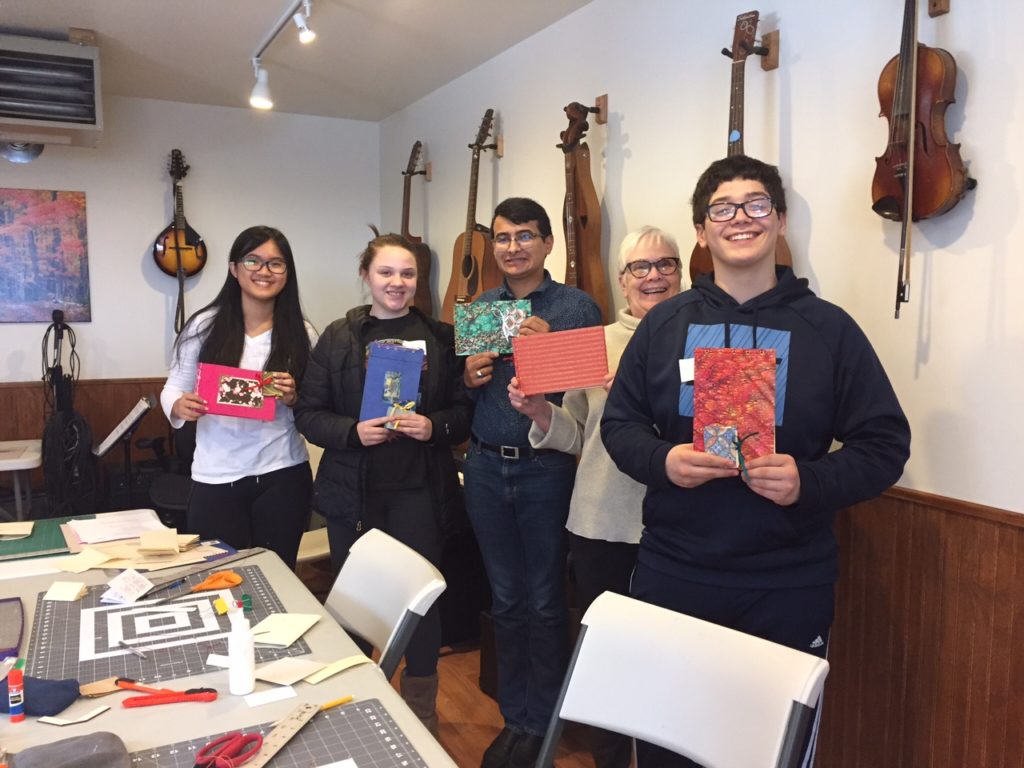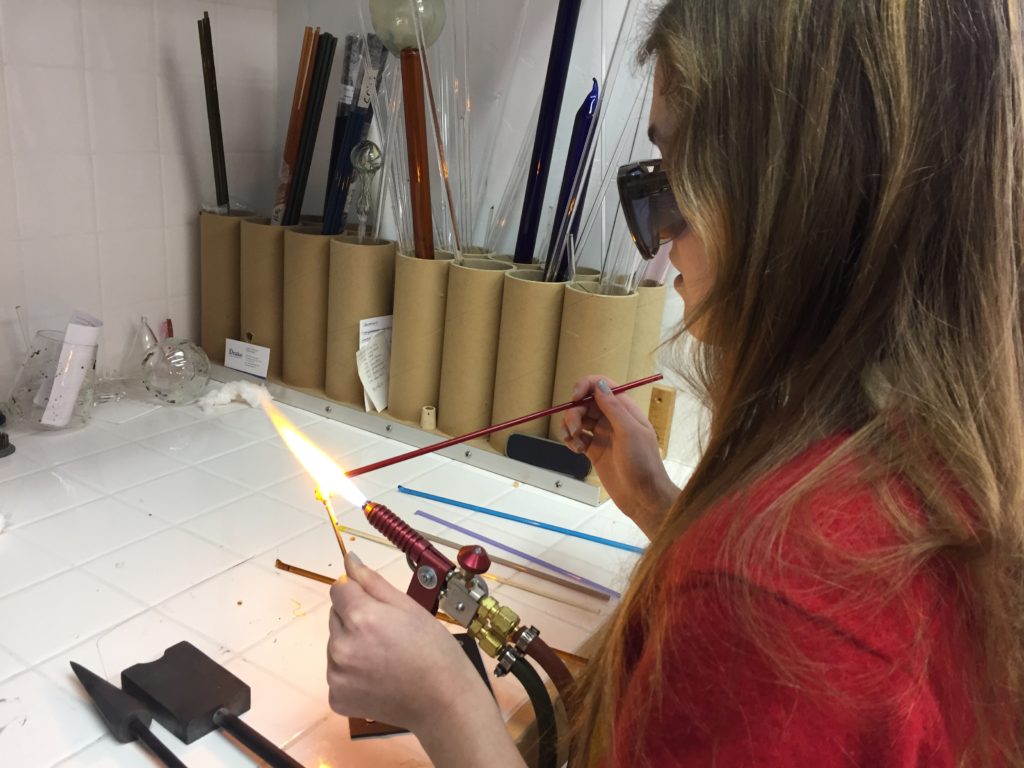A Day Away from the Classroom: Exposing Students to the Creative Community
- Share
- Tweet
- Pin
- Share

by Ann Soderlund
For one day during the school year students step away from the black and white of their curriculum and spend six hours exercising their right brain in unique ways. Through the efforts of Gibraltar High School and Friends of Gibraltar (FOG) Program, in partnership with The Francis Hardy Center for the Arts, Inc. (The Hardy Gallery), students are divided into 16 art workshops scattered across the peninsula for a day of Exposure To Creativity (ETC).
The ETC Program was established in 2007 as a hands-on learning program to help students understand the nature of creativity and the processes involved in creating art in various media as well as to experience the satisfaction of participation in the arts. Exposure to all facets of art, including visual, performance (music, dance and drama), literary and applied arts opens children to new ideas, experiences, challenges and instills the importance of applying creativity into every aspect of life, which gives them an advantage for adulthood. After the workshops, if students find they have an interest in some facet of art, mentorships are provided for further learning and training by local, expert artists.
For some of the young adults who live their lives in Door County, the exceptionality of this area and its large arts community goes inexperienced and overlooked. Not because it is not interesting to them, but because their focus is called to other matters – students here, like students everywhere, are expected to follow a set timeline. When you’re in high school, your focus should be on studies, extracurriculars, getting a job, learning to drive, deciding where to apply to college, what to study when you’re there, and ultimately, what to do for the rest of your life. The pressures for these students are enormous, even more so when we realize they are asked to plan 5-10 years into their future at ages as young as 15.
Needless to say, these kids don’t have a high priority for art – learning, practicing or otherwise. However, when they are given the opportunity to step out of their scheduled lives and let loose their creativity in the form of new tasks, their stresses melt away and they’re left with a sense of liberation. Yes, students have the opportunity to exercise their creativity at school in their art classes but most school facilities can only accommodate the basics such as drawing, painting, woodshop and ceramics – some areas students may not find a connection to.
Art is also incredibly personal. To create something completely of your own design, from conception to production creates a bond; and to be told that your drawing or painting looks bad after spending that time on it can be devastating to anyone, child or adult. The fear of not being good enough at something as arbitrary as art – a field that goes against all the structured learning in a child’s classroom life – is daunting. Children may start out creating of their own volition without hesitation but as they grow and become less self-assured and more in need of validation from their peers, the confidence they once had in themselves dwindles, along with their creativity. It becomes more important to stay in formation and blend in.
But in these ETC workshops, students are divided into small groups with their peers that share an interest in some aspect of art. Prior to being assigned a media, students are given a survey to rank the workshops in order of their personal interest; the workshops cover art in areas like performance (theater, dance), music (composing, playing), graffiti art, metalsmithing, drawing, painting, ceramics, glass blowing, glass forging, filmmaking, graphic design and digital photography. By grouping students with similar interests, it eliminates the fear of not being good enough because everyone is new to it.
With these workshops, the goal is not only to expose the students to the vastness of the art world and how it can be applied to every facet of life, but also to expose them to their own community and what the arts offer and do for everyone here.
Notably, this year’s ETC Program, held on March 2, 2017, hosted a partnership with Chief Oshkosh Native American Arts of Egg Harbor owner Coleen Bins. Bins is of the Oneida Nation and teaches children of all ages different traditional and contemporary Native and Iroquois crafts.
Thanks to the Oneida Nation Arts Program SEED Grant (funded in part by the Wisconsin Arts Board) which brings awareness to Native American tribes by offering art workshops to local youth, The Hardy Gallery and FOG were able to have Bins instruct a metalsmithing workshop for eight Gibraltar students.
During her workshop, the students not only learned the basics on metalsmithing and created their own jewelry pendants, but Bins instilled in them some traditions and stories of her Oneida culture. Those eight students were able to learn about another culture in a creative environment that would not have been possible without the ETC Program.
At the end of the day, the goal is to provide these students with an environment of encouragement and support to let go of their inhibitions and stimulate their creativity. The world is always in need of creative people.
Now in its 10th year, the ETC Program is supported in partnership with Gibraltar School District, FOG, a grant from the Wisconsin Arts Board, the National Endowment for the Arts, MMG Foundation and supporters like you. The Hardy would like to thank all the ETC Workshop Instructors, The Clearing Folk School, Write On Door County, Gibraltar School District students, FOG Coordinator Vinni Chomeau, and all the supporters of this program who make it possible.
Ann Soderlund received her Bachelor of Arts degree in Arts Management from the University of Wisconsin-Green Bay in May 2015. Shortly after graduating, she made her way up to Door County to intern for the Hardy Gallery. During her four years at UWGB she discovered a love for exhibition and gallery work while working in the university’s Lawton Gallery. Soderlund has been the Program Coordinator for the Hardy Gallery since November 2015.
Peninsula Arts and Humanities Alliance, Inc., which contributes Culture Club throughout the summer season, is a coalition of nonprofit organizations whose purpose is to enhance, promote and advocate the arts, humanities and natural sciences in Door County.


